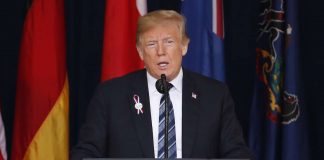OCTOBER 28, 2023

After the second time Arshdeep Singh, a supporter of a Sikh political party in Punjab, was threatened by men he believed were affiliated with India’s ruling Bharatiya Janata Party, his father made arrangements for him to leave the country.
Singh’s 40-day journey this past summer from his village in Punjab, in northern India, to Fresno, Calif., was guided by voices of men he had never met on a cellphone. Every few days, they sent him digital boarding passes of his flights and instructions on where to meet the next local smuggler.
The 23-year-old is one of the record number of asylum seekers from India who are traveling across the world to the U.S.-Mexico border and contributing to the struggles the Biden administration is facing in curbing the surge in illegal border crossings.
Roughly 42,000 migrants from India have crossed the southern border illegally during the fiscal year starting last October through September, according to data compiled by U.S. Customs and Border Protection. That is more than double the number from the same period the prior year, when crossings by Indians hit a historic high. An additional 1,600 have crossed from the northern border illegally—four times the number who crossed in the last three years combined.
Since 2007, the total number of illegal border crossings by Indians in a fiscal year has exceeded 5,000 only four times. Indians nearly all turn themselves in to Border Patrol, rather than being arrested while evading capture, because they want to ask for asylum in the U.S.

Singh said he flew from New Delhi to Hungary, where he was kept in a small room for 10 days and given a few pieces of bread and some water. From there, he flew to France, then to Mexico City, where he said he was locked in a room for another week. After another flight and a long bus ride, a man in a pickup truck closed the distance to the U.S. border, he said.
He crossed into California, starving and weak, and was taken to a processing center where he saw several others who had made a similar journey from his home state. “The path here turned out to be just as dangerous as it had been for me to stay in Punjab,” he said.
A combination of factors has led to the significant jump in migrants crossing the U.S. border illegally from India. Prime Minister Narendra Modi’s Hindu nationalist policies are driving out some residents. Success stories from those who have made the trip and found jobs are circulating on social media and acting as a draw. There has also been an influx of smugglers masquerading as travel agents across villages, especially in the northern states of Punjab and Haryana.
Administration officials say migration from India and other countries outside the Western Hemisphere has made it more difficult to stem the flow of illegal entries at the U.S. border. The U.S.’s lack of established relationships with those countries on immigration makes it slower and more expensive to deport those migrants.
Overall, arrests for illegal border crossings surpassed two million at the end of the 2023 fiscal year, making it only the second time they have crossed that mark. The first time was in 2022.
“It really is pointing to this huge trend of mass migration worldwide,” said Colleen Putzel-Kavanaugh, an analyst for the Migration Policy Institute, a Washington think tank. “We’re seeing that people from other countries are making their way to the U.S. border, when traditionally they haven’t.”

For the first time this year, migrants from countries other than Mexico, Guatemala, Honduras and Ecuador, where the U.S. has typically seen asylum seekers, are expected to have a slight majority when the total arrests of migrants illegally crossing for the fiscal year are broken down by nationality, Putzel-Kavanaugh said.
Legal pathways for Indians entering the U.S. also are straining under heavy demand. In the past, some immigrants from India entered on a tourist visa and overstayed it rather than make the journey to the southern border to seek asylum. But wait times for those visas have exceeded two years. Indians also face a longer wait time than immigrants of any other nationality to get a green card in the U.S., according to government data.
Deepak Ahluwalia, an immigration lawyer who represents Singh, said he is seeing an increasing number of political and religious persecution asylum cases from India, especially from the Sikh community.
Modi’s handling of a yearlong protest by Sikh farmers contributed to discontent within the community. Modi, of the Hindu nationalist BJP, has been warning of a revival of a Sikh separatist movement in India fueled by activism on the issue by Sikhs overseas. Earlier this year, his government restricted communication across Punjab and made dozens of arrests as it launched a manhunt for an activist who has advocated for an independent Sikh homeland called Khalistan.
Many Indian migrants are also coming to the U.S. for economic reasons, which don’t qualify them for asylum, saying in videos posted on social media and in interviews after being deported back that the lack of well-paying jobs made them desperate to leave. In many cases, they sell everything they own to pay smugglers, who now operate on a much more global and professionalized scale across the world.
Singh said his father, a farmer, hasn’t said how much he paid the smugglers, but he thinks he sold some of his farm land to fund his son’s path to the U.S.
Roughly 80% of the migrants from India are single adults, and most are coming through Arizona after taking what are coming to be known as “donkey flights” via countries that don’t require visas for Indian nationals or that have an easier process for obtaining travel visas. A coming Bollywood movie, titled “Dunki,” which will feature India’s biggest movie star, Shah Rukh Khan, centers on this illegal method of immigration.
Some have died during the journey, including Gurupreet Kaur, a 6-year-old girl from Punjab who perished in the Arizona desert in 2019. Two sets of families of four from Gujarat also died crossing the northern border in the past two years.
Nonprofits in border communities in Arizona that help migrants are having to adapt to the uptick in Indian migrants. Diego Piña Lopez, director of Casa Alitas, said his shelter has had to rethink dietary restrictions and consider religious and cultural differences, given the large number of Indian migrants they are now seeing.
“It used to be an annual thing that in the summers we would see small pockets of people coming from India,” he said. “Now we are seeing people from India almost every day.”
Singh is waiting for his asylum-case court date, which he says got pushed from this year to 2026. There are about 2.6 million pending cases in the U.S. immigration court system, according to government data compiled by the Transactional Records Access Clearinghouse at Syracuse University.
Singh said he never asked the Indians he was detained with why they left home because he already knew the answer: “No one leaves their home like this unless they feel like they have no other choice.”
Courtesy: WSJ






































































































